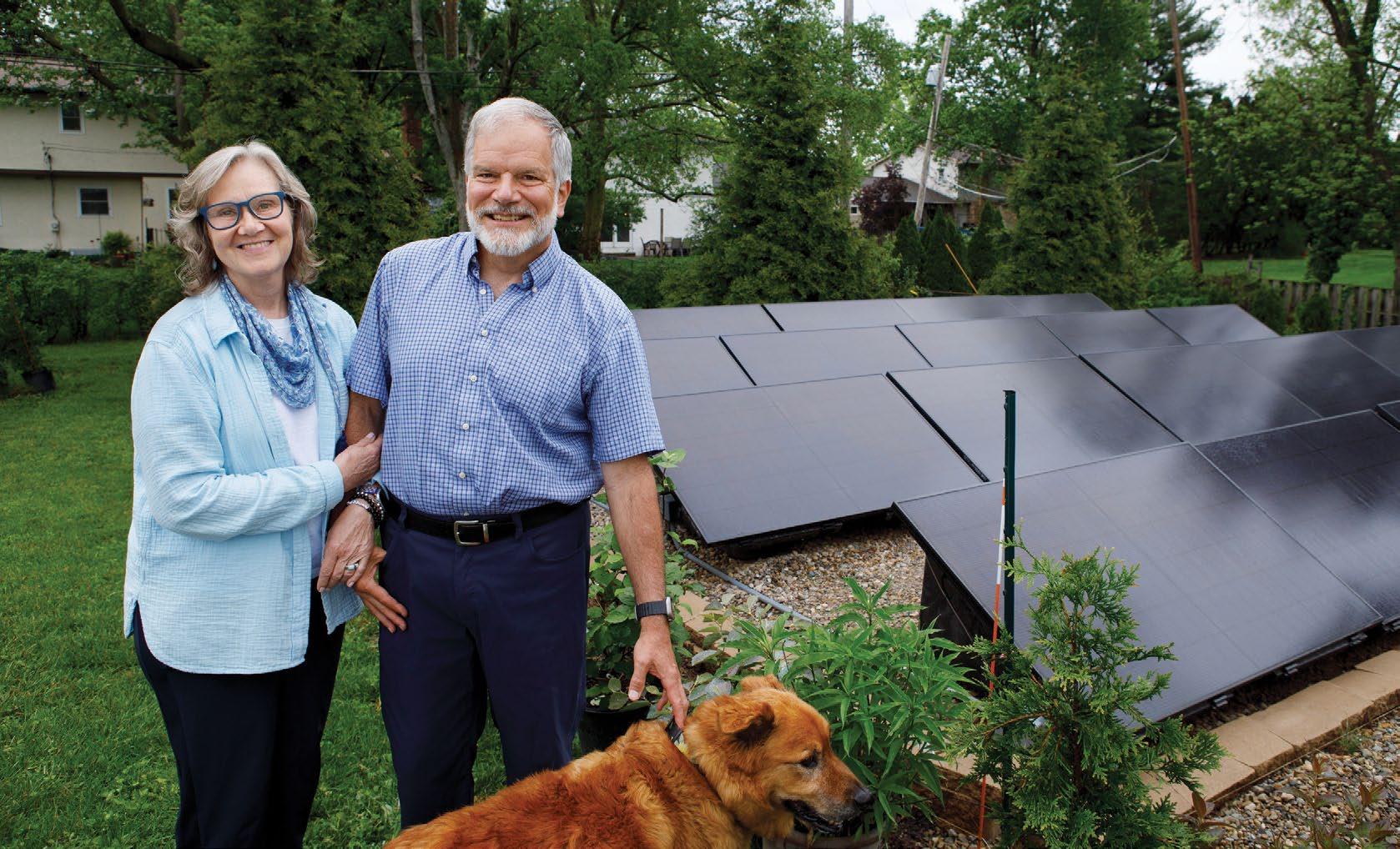
4 minute read
Westerville Couple Goes Solar
Homeowners invest in energy efficiency
When we flip a light switch in our homes, plug our smart phones into a charger or leave the refrigerator door open searching for a late-night snack, how much energy and electricity we use is not always at the forefront of our minds.
We use electricity for most of our daily tasks. According to the U.S. Energy Information Administration, households consumed 4 trillion kilowatt-hours (kWh) of electricity in 2022, the highest recorded number since 1950. Eighty-three percent of that electricity is generated from petroleum, natural gas and coal. Solar, wind and nuclear power only account for 18% of energy production in the United States.
As the City adds solar energy to its power portfolio for the first time this year, one Westerville couple is also determined to offset their reliance on nonrenewable power sources, diving head first into their own energy independence.
When Steve Herminghausen and Kathy Kennedy purchased their 1950s home on Walnut Street in 2022, it was a small house with a barren expanse of lawn. They immediately set to work renovating, building an addition and with a plan to incorporate solar panels on their property. The renovations took just under a year to complete. It was then that the couple decided to start really looking at their energy consumption and how much power they consumed. The data armed them with information they needed to begin planning their solar energy project.

The couple first considered installing solar panels on their roof, but hit a snag when they learned they would have to completely reroof their entire house to make the solar system compliant. That’s when they turned to their expansive lawn. After attending meetings of a local energy co-op called Solar United Neighbors, Herminghausen and Kennedy decided on a ground array for their solar project; ground they had plenty of.
They started their project by hiring a firm to plan every aspect of the project from the placement to the type of panels to be installed.
“There are several different layouts of ground array solar panels, but many of them are large and intrusive,” said Herminghausen. "We ended up choosing a bin-type installation to keep the solar panels lower to the ground.”
Herminghausen and Kennedy submitted their plans to the City for approval, receiving feedback from the Electric and Fire Divisions, as well as the Planning and Development Department. Considerations were made for proper setbacks from neighboring properties, correct electric metering and how the solar array would tie into their home.
“I was impressed with how quickly our plans were approved and how supportive the City was of our project,” said Kennedy. “We are the first ground mount residential solar project in Westerville. As early adopters of this technology, we hope to be able to educate other homeowners about solar energy.”
The couple installed 22 solar panels on their property, and they completed the project in November 2024, approximately three months from initial plan submission.
“The payback period on our solar project is not all that realistic. This was a $30,000 project,” said Herminghausen. “This is really meant to offset our own energy consumption, reducing the need to use fossil fuels to power our home. We want to be better stewards of the planet.”
Before the solar array was installed at their home, Herminghausen and Kennedy were using about 1200 kWh per month, based on their City utility bill. Today, they are only using about 550 kWh in electricity from the City. They are producing more than half of their electricity from their solar array. Herminghausen estimates that over the course of the entire year the solar array will generate 90% of their electricity.
“I think of my dad exclaiming, ‘Do you think we own the electric company!’ whenever we’d leave lights on around the house,” said Kennedy. “Now we do own our little part of the ‘electric company,’ I’m even more aware of our electricity consumption.”
The City is committed to supporting energy efficiency programs. For additional information, visit www.Westerville.org/Sustainability.

